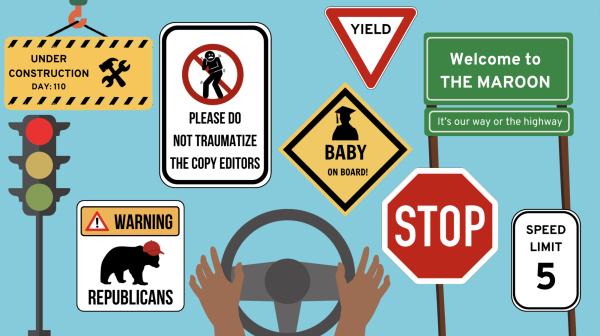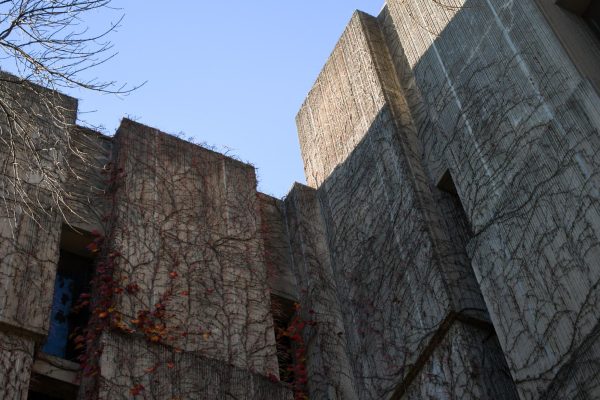Open Letter to the University’s Department of Safety and Security on Traffic Safety
Improved safety will come by changing the built environment to slow down drivers, not by admonishing pedestrians
April 25, 2023
The University’s Department of Safety and Security is not serious about traffic safety.
The Department recently installed “safety flags” and signs at several crossings around campus, including some Midway crossings and the crosswalk in front of Ratner. These bright orange flags sat in a bucket on one side of the intersection, and when you wanted to cross, you were supposed to pick up one, wave it in front of drivers, and deposit it in the bucket on the other side. The signs said “Stop and look before crossing.”
I am embarrassed and disappointed in my alma mater.
These types of victim-blaming PSAs never improve safety. There is no legal or ethical requirement for pedestrians to stop before using a crosswalk. However, there is both a legal and ethical requirement for drivers to be attentive and yield. What is definitively proven to improve safety is slowing drivers down, protecting pedestrians with curbs and posts, and improving sight lines.
The City recently installed “raised crossings” at some of the mid-block crosswalks on the Midway. However, whether for drainage or other design constraints, these are so shallow they are almost useless. Cars regularly drive 45 miles per hour over the bumps, which is 20 miles per hour over the speed limit. Raised crossings are a great tool—but only if they’re actually raised.
Speed matters immensely in car-pedestrian collisions. According to the National Highway Traffic Safety Administration, the chances of survival for a pedestrian hit by a car at 20 miles per hour is 95 percent—you’ll go to the hospital, but probably live. For a pedestrian hit by a car going 45 mph, the chance of survival drops to 40 percent—you’re probably dead.
On either side of these crosswalks, there are “no-parking” zones, so that pedestrians entering the crosswalk can be seen by approaching drivers. Despite re-paving the road and re-pouring the crosswalk ramps, the curb was not extended to make parking here impossible. These kinds of curb “bump outs” into the parking lane (such as those recently installed on portions of 57th Street) greatly improve pedestrian safety, by shortening crossing distance and improving visibility. But they were not installed on the Midway. Why?
As if to add insult to (physical) injury, I have seen Department of Safety and Security SUVs (the ones with the green lights) parked in these “no-parking” zones, an illegal act that makes it more dangerous for people passing through the park.
The Department says they are “working with the city of Chicago as they study potential infrastructure changes to further enhance pedestrian safety.” No more study is necessary. Stop prioritizing automobile traffic through a walkable urban campus. Install proven traffic-calming infrastructure now, before more University affiliates and neighborhood residents are injured.
—Steven Lucy, A.B. ’06









Luis Bettencourt / Apr 27, 2023 at 10:59 pm
Thanks Steven, for stating so forcefully what many of us have been trying to tell the university administration. A group of us with traffic and urban expertise, and the daily experience of crossing the midway, had alerted the administration to the danger and made recommendations based on federal guidelines for the bump height vs speed of traffic. After a basic acknowledgement, what we got instead were the crossing flags, which were then quickly disappered after much derision.
We need to do much better as an institution.
ace / Apr 25, 2023 at 8:20 pm
Hell yes to all of this. Thank you.